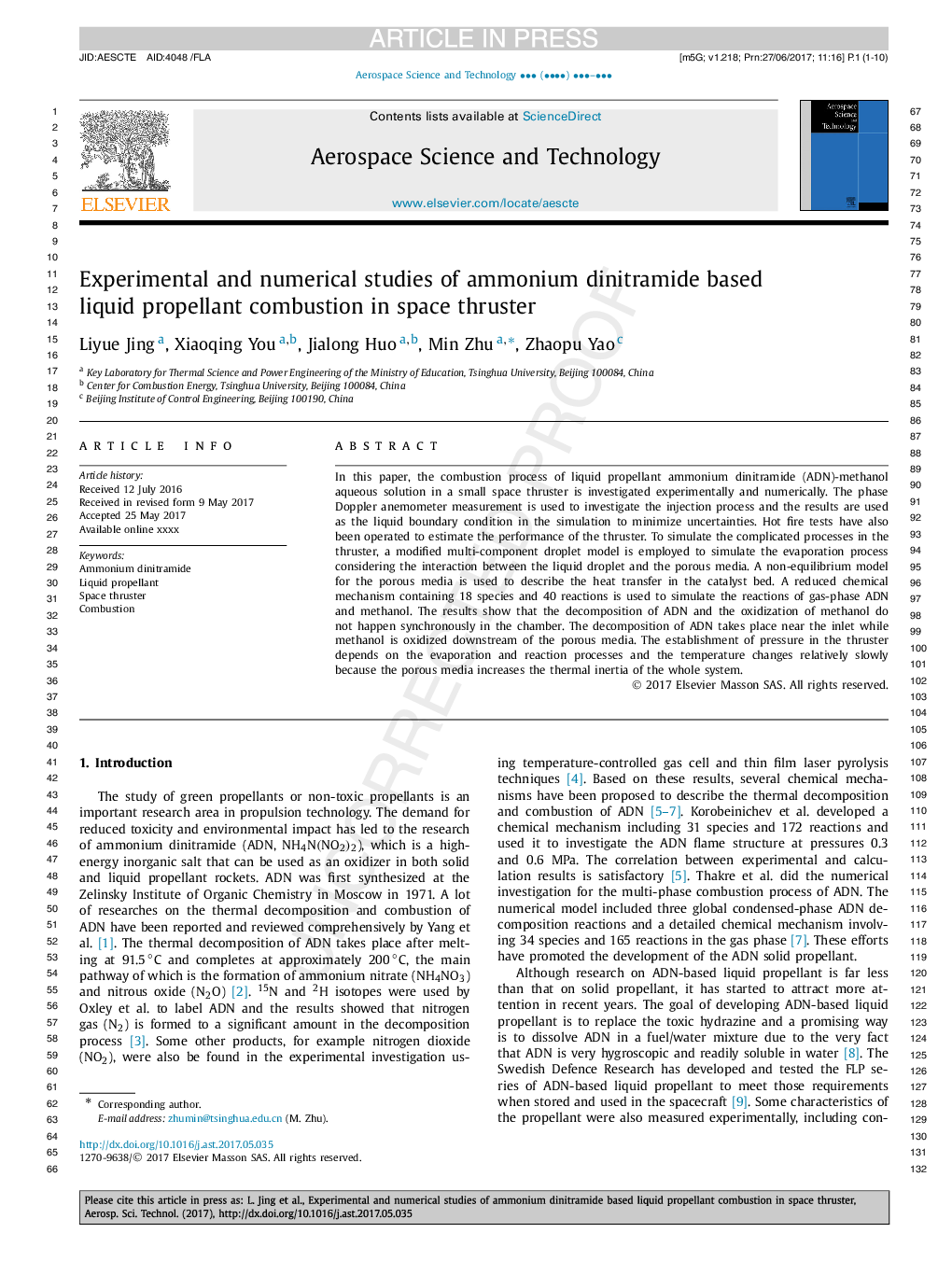| Article ID | Journal | Published Year | Pages | File Type |
|---|---|---|---|---|
| 5472726 | Aerospace Science and Technology | 2017 | 10 Pages |
Abstract
In this paper, the combustion process of liquid propellant ammonium dinitramide (ADN)-methanol aqueous solution in a small space thruster is investigated experimentally and numerically. The phase Doppler anemometer measurement is used to investigate the injection process and the results are used as the liquid boundary condition in the simulation to minimize uncertainties. Hot fire tests have also been operated to estimate the performance of the thruster. To simulate the complicated processes in the thruster, a modified multi-component droplet model is employed to simulate the evaporation process considering the interaction between the liquid droplet and the porous media. A non-equilibrium model for the porous media is used to describe the heat transfer in the catalyst bed. A reduced chemical mechanism containing 18 species and 40 reactions is used to simulate the reactions of gas-phase ADN and methanol. The results show that the decomposition of ADN and the oxidization of methanol do not happen synchronously in the chamber. The decomposition of ADN takes place near the inlet while methanol is oxidized downstream of the porous media. The establishment of pressure in the thruster depends on the evaporation and reaction processes and the temperature changes relatively slowly because the porous media increases the thermal inertia of the whole system.
Related Topics
Physical Sciences and Engineering
Engineering
Aerospace Engineering
Authors
Liyue Jing, Xiaoqing You, Jialong Huo, Min Zhu, Zhaopu Yao,
